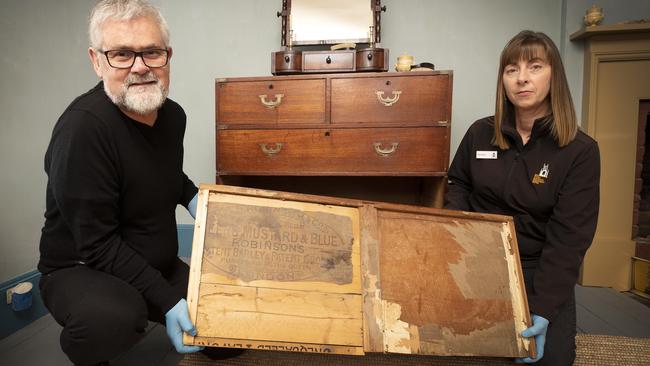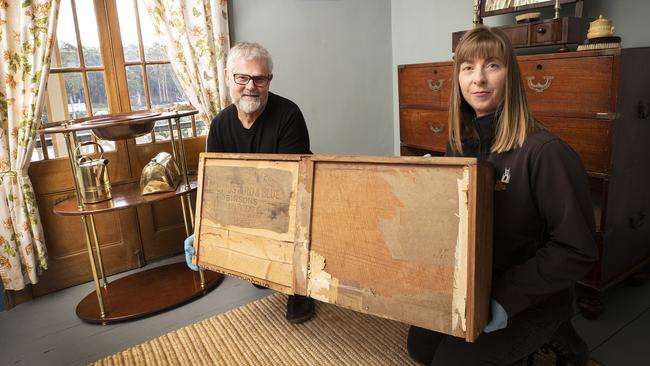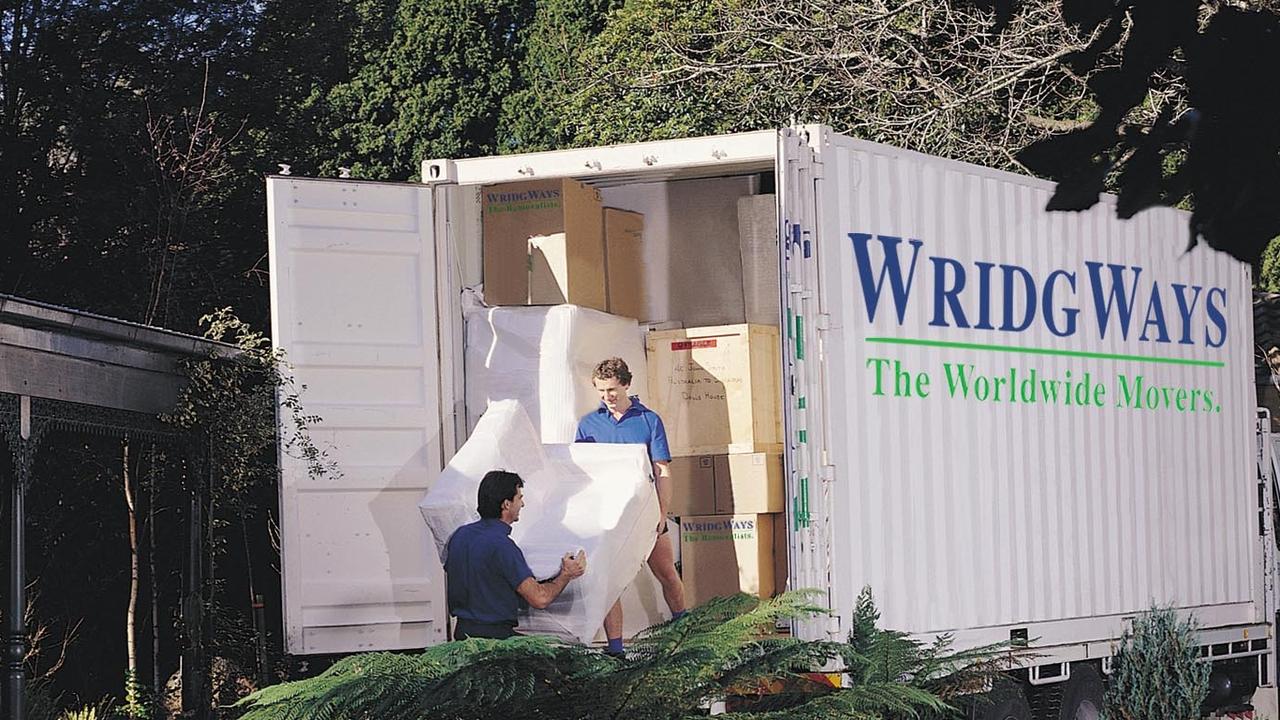Port Arthur’s historic collection reveals more finds
A piece of Hobart’s history linked to a convict forger has been uncovered during recent conservation work at the Port Arthur Historic Site.

News
Don't miss out on the headlines from News. Followed categories will be added to My News.
- Jobless rate to hit 9.25 per cent as budget faces $850b debt
- PHOTOS: Man arrested after North West rampage
- Supermarket worker recounts horrific, public domestic violence
- Tassie GP: Why eradication is our only way to beat virus
A FASCINATING piece of Hobart’s convict past has been brought to light during recent restoration work at the Port Arthur Historic Site.
The find of a packing crate connected to an early Hobart business embedded in a chest of drawers along with a collection of glass beads is exciting the site’s chief collections officer.
“It’s a very interesting find. The drawers are highly significant for us and this find is of great interest,” Mr Michael Smith said.
“It’s luck that it stills exists. It’s luck that someone recognised it and it’s luck that it was able to make its way back into the notice of someone who could get it back to Port Arthur to put it into its historical context.”
Mr Smith, the conservation project officer of the Port Arthur collections, says the teak drawers have been on display in the bedroom of the Commandante’s house since 2011, but it wasn’t until a recent insensive clean during the pandemic downtime that the discovery was made.
“We don’t often get the opportunity to have an intensive examination of items, but this COVID landscape has provided us with the opportunity to go back and have a look and we’ve made some interesting finds,” he said.
The campaign furniture drawers, built in 1840 and belonged to John Charles Tapp, a convict charged with forgery. At a later date a repair was made with a piece of timber taken from a packing crate, which is stamped with the Keens and Robinson mustard emblem, the company that preceeded the more famous Keens curry brand that was Hobart based.
“It’s an object with connections to Hobart and connections to Port Arthur. Once you start to find connections between objects and the site, and in this case to Tasmania’s history, the objects start to take on a much more activated life and more significance,” he said.
“This find of the Keens and Robinson mustard packing crate, the precursor to our Keens curry, creates an emotive connection to the object for us.”

Port Arthur’s director of tourism operations Anne McVilly said its conservation team has benefitted from the world heritage site’s downtime.
“For it to be there all that time and to have only found it because of COVID, I think it’s a great story. We usually try to schedule conservation work around visitors, but with up to 366,00 visitors annually and when you’re open every day of the year and every night that can be hard,” said Ms McVilly.
Along with the packing crate, a series of small glass beads were found in a dovetail join by a staff member on secondment from the visitor services team.
“It’s such an incredible opportunity to handle these objects and be able to bring them back to life. It’s been quite rewarding,” said ticketing clerk Jennifer Dixon.
“I’m very proud of my find. I was cleaning the lower half of the drawers when I found the beads and it was incredible. There are different colours: blue, black and clear, and a spacer, and all much smaller than a matchhead. I wasn’t sure what I’d found to start with. It’s quite exciting as any discovery like that is photographed and documented,” she said.
Mr Smith believes the beads may have been associated with a purse or a piece of decorative lace, although it’s pure speculation.
“The historical side of the site is really quite interesting. It’s surprising how much still comes to light. There’s a phenomenal amount of room for new discoveries at the site and it just keeps giving,” he said.
susan.oong2@news.com.au


